BS 8580-2. What is it and should I care?
Published on:OK, ready for a deep dive into a different world? Let me take you by the hand, Layman's style.
We're new to this so hopefully our understanding of this area enables us to summarise BS8580-2 in a succinct and easily digestible fashion.
Let's start with some terms:
- AMR (Antibiotic Resistant Strains) - Antimicrobial resistance occurs when microbes evolve mechanisms that protect them from the effects of antimicrobials. All classes of microbes can evolve resistance.
- Pathogens - In biology, a pathogen in the oldest and broadest sense, is any organism or agent that can produce disease. A pathogen may also be referred to as an infectious agent, or simply a germ.
- Biofilm - A biofilm comprises any syntrophic consortium of micro-organisms in which cells stick to each other and often also to a surface.
- Pseudomonas aeruginosa - Pseudomonas aeruginosa is a common encapsulated, gram-negative, aerobic–facultatively anaerobic, rod-shaped bacterium that can cause disease in plants and animals, including humans.
- CPO - Gram-negative bacteria that are resistant to the carbapenem class of antibiotics, considered the drugs of last resort for such infections.
What is BS8580-2?
Broadly BS8580-2 provides recommendations and guidance on how to carry out risk assessments for Pseudomonas aeruginosa and other waterborne pathogens whose natural habitat is within constructed water systems and the aqueous environment rather than those present because of a contamination event.
It additionally covers associated equipment, system components and fittings plus above ground drainage systems.
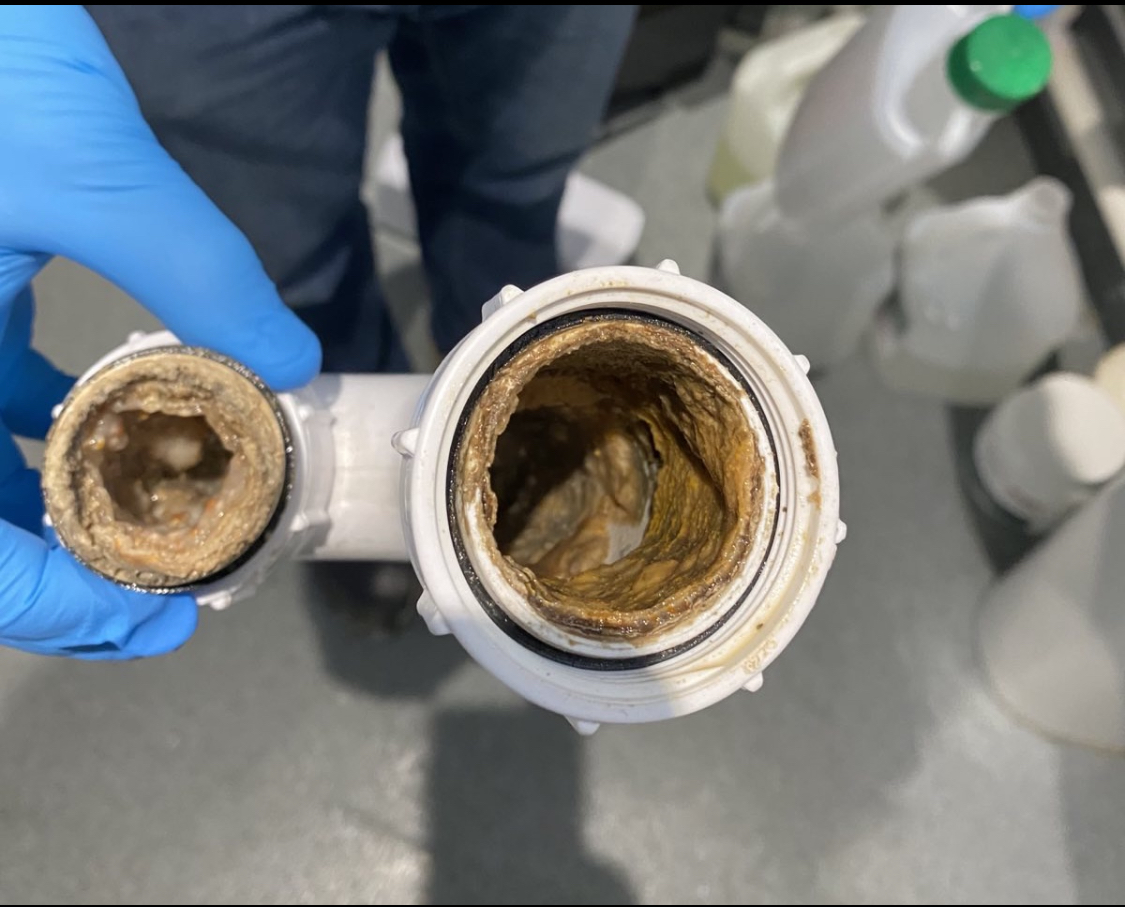

Biofilms love to grab onto uric crystals that from in the u-bend and pipework in urinals
What are we interested in when it comes to BS8580-2?
We are surrounded by wet environments. A washroom is in every building.
A wet environment promotes microbial growth. Microbial growth is the source of Antimicrobial Resistant Strains.
It’s the opportunistic pathogens that we are interested in. These are the cause of severe illnesses in healthcare and the community.
i.e. Pseudomonas aeruginosa, Acinetobacter baumannii, and Stenotrophomonas maltophilia
Emerging pathogens in Europe, such as CPO, many of which have faecal origins, survive within the biofilm formed on sink surfaces and wastewater plumbing.
This pathogen was the primary reason TECcare developed R-Foam.
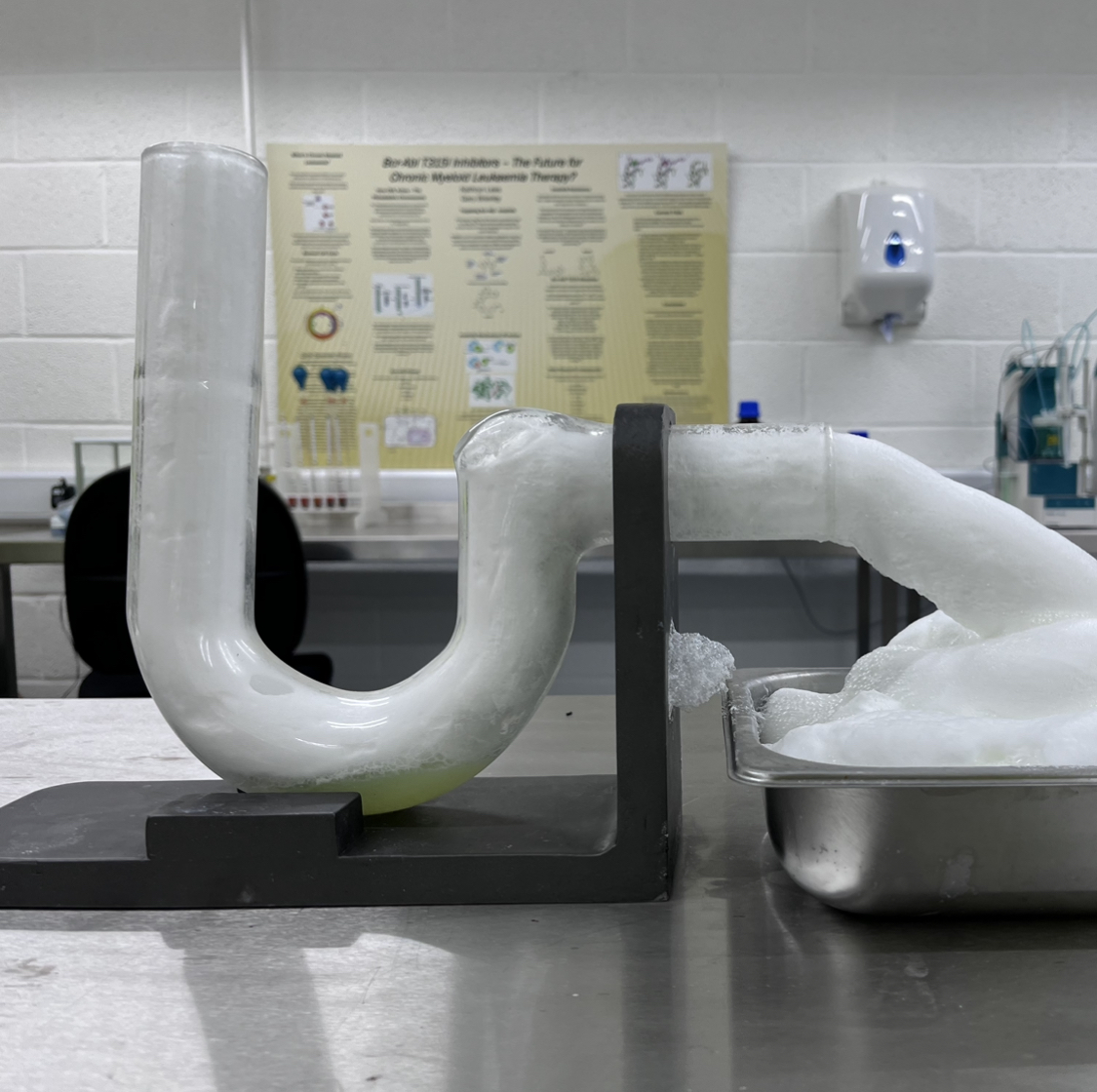

Our antiquated plumbing systems are a dream for pathogens that are looking for growth (they all want to grow). Wastewater collecting in plastic pipework feeds the biofilm thanks to skin cells from hand washing, polymers and fillers from hand soap, Keratin from shampoos etc.
This is a perfect storm for the harbouring of dangerously high levels of pathogens.
R-Foam, developed in Hampshire, UK, provides a solution.
Plant-based and 100% rapidly biodegradable, R-Foam is an expanding body of harmless foam that fills the inside of a pipe.
The foam is slippery to touch. This is known as ‘Nature’s Grease' and creates a hostile environment for pathogens.
The biofilm ‘food’ coming down the plug, drain or trap wants to cling on to the biofilms that have attached to the very sticky (static) internal surface of the pipe.
But what if the biofilm couldn't form in the first place due to a very slippery surface?
Welcome to R-Foam and your solution for managing BS8580-2.
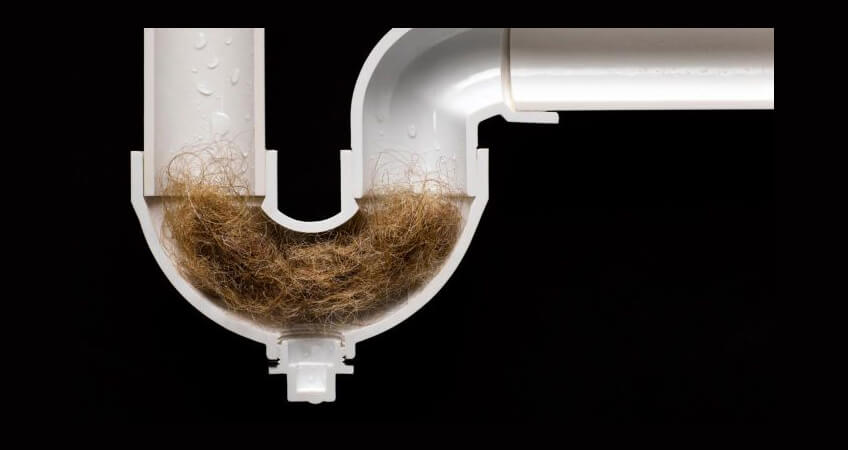

An extreme example, but you get the point. Hair is a trap for biofilm food.
The formation and development of biofilm
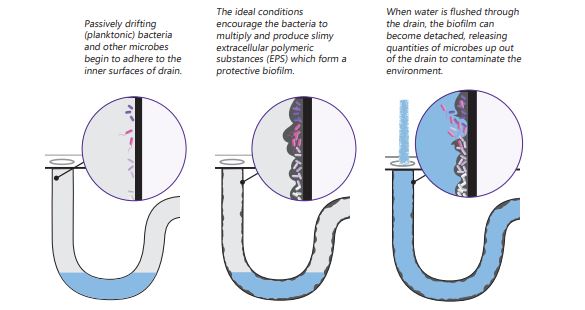

The solution to biofilm-free drains
Although biofilm development and formation on surfaces is well understood (diagram above), the prevention of biofilm formation and the disruption of established biofilms is a significant problem.
Traditional disinfectants are ineffective as they cannot break down the biofilm structure that protects the microbes within it, and the option of replacing contaminated sanitary ware components is impractical, inconvenient and costly.
To combat this issue TECcare® has developed the TECcare R-FOAM drain disinfection kit, a proven protocol for the destruction of biofilm and the high-level disinfection and cleaning of drains, showers and sanitary ware.
TECcare R-Foam
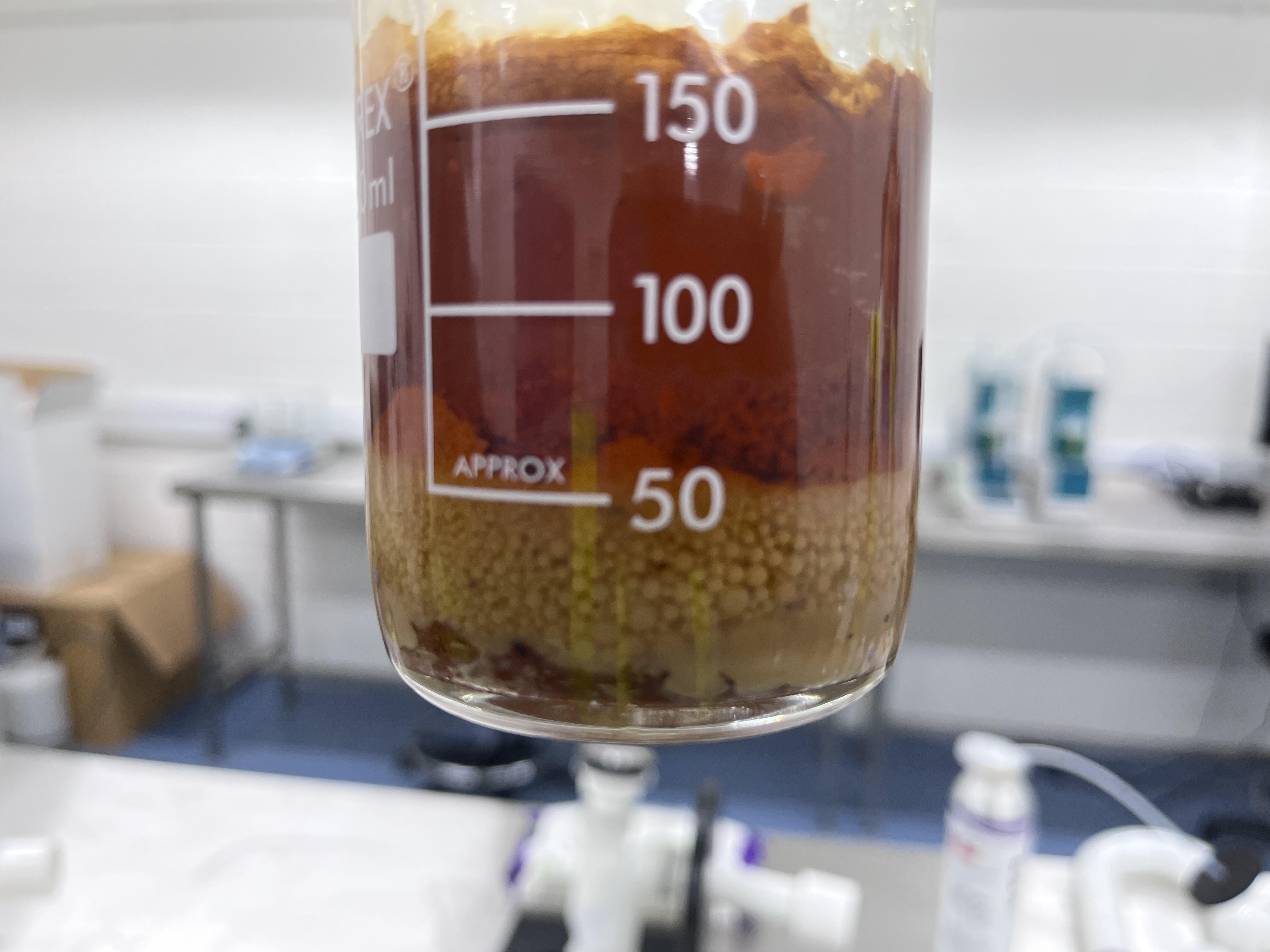


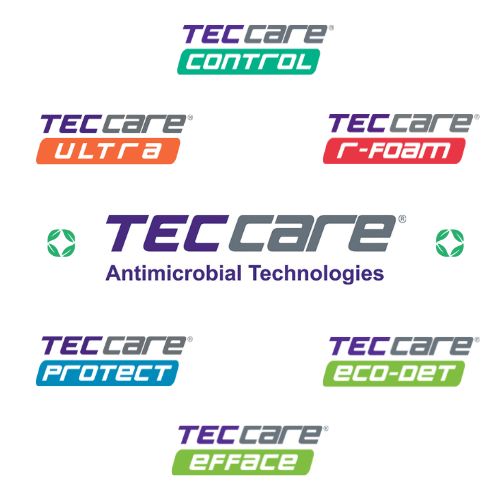 12/11/2022
12/11/2022
